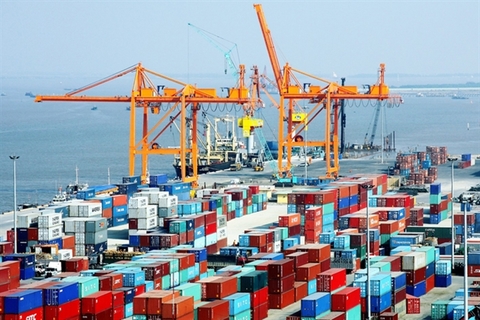
Online import and export activities of small- and medium-sized enterprises (SMEs) are expected to develop further in the future. — Photo congthuong.vn
Online import and export activities of small- and medium-sized enterprises (SMEs) are expected to develop further due to the low number of them currently embracing e-commerce, according to experts.
The Viet Nam e-business index report showed that 32 per cent of Viet Nam's SMEs have established businesses with foreign partners through online channels.
Joining B2B (Business to Business) e-commerce platforms will help export enterprises directly approach customers, thereby expanding opportunities to access the global market and reducing costs relating to traditional trade promotion such as fairs and exhibitions, and open offices in target markets. Meanwhile, businesses could deal with customers through online channels or e-commerce websites.
According to a representative from the E-commerce Development Centre under the Ministry of Industry and Trade (MoIT)'s Viet Nam E-commerce and Information Technology Agency (Vecita), Vietnamese enterprises have used online trading floors to find foreign partners and customers.
In fact, for traditional trading channels, besides cumbersome procedures, many businesses see huge expenditure when finding foreign partners or implementing trade promotion programmes.
Therefore, the online import and export channel is a great opportunity to reduce costs and time for businesses, especially SMEs looking for business partners, doing trade promotion, marketing products and implementing transactions and payments, according to the representative.
However, according to experts, the local enterprises, especially SMEs in Viet Nam, still had difficulty accessing online trading activities because about 66 per cent of SMEs are of a tiny scale.
Nguyen Ngoc Dung, vice chairman of the Viet Nam E-commerce Association, said the enterprises still had limitations in information and knowledge about e-commerce, especially cross-border e-commerce, leading to difficulties and inefficiencies in joining online export activities.
Sharing reasons on not really popularising the online export-import channel, Dung said that enterprises did not have enough skills to confidently sell their products online. The association had worked with many providers and consulting companies to support businesses in accessing websites to export products.
The association hoped businesses would have more experience in online trading activities to gain new customers, Dung said.
To support businesses applying e-commerce for import-export activities, the Viet Nam Export Support Alliance had been established to seek support service packages to find customers and improve competitiveness in some neighbouring markets for local businesses, reported phapluatxahoi.vn.
Dung said cross-border e-commerce was becoming an important channel for businesses in export, he said that Vecom would strengthen promotion and training activities to make products from traditional craft villages available online.
In 2019, the MoIT plans to organise programmes to support businesses to enhance export capacity in online retailing and provide them with information on export opportunities.
Besides, the ministry will guide enterprises to improve their products’ designs and complete administrative procedures for export.
According to the ministry’s Viet Nam E-commerce and Digital Economy Agency, Viet Nam’s e-commerce has had strong growth with the highest rate of 30 per cent in 2018 rising to US$7.8 billion revenue from $4 billion in 2015.
If the growth rate of 2019 and 2020 continues to be at 30 per cent each year, the revenue by 2020 will reach $13 billion. — VNS